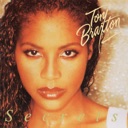R&B
A Tribute to the Music of Motown: featuring Boyz II Men
© Stephanie BergerKey Attributes of R&B
Select to filter timelineThemes
- Love/Relationships
- Daily Life
- Entertainment
- Dance
Musical Features
- Vocals
- Beat
- Groove
- Timbre
- Harmony
- Arrangement
- Polyrhythms
- Sampling
- Tempo
Instruments
- Bass
- Drums
- Electric Piano/Synthesizer
- Guitar
- Other Electronic Instruments
- Piano
“There’s different cats with different approaches to R&B. There’s more of a pop sensibility to Chris Brown and those guys, which started with Usher. Now, it’s elevated to a more futuristic sound because of video games and sonically, things change.”Anthony HamiltonNeo-soul Vocalist
In 1990, Billboard (the leading music trade magazine that charts popular music) reintroduced the term R&B—the retro label that had been coined (as rhythm and blues) in the 1940s—to categorize all styles of Black popular music other than hip-hop. R&B embraces the soulful, medium-tempo ballads of Luther Vandross, Anita Baker, and Gerald Levert; the funky up-tempo songs of Janet Jackson and Michael Jackson; Whitney Houston’s soaring vocalizations and pop arrangements, as well as the vocal group harmonies of After 7, TLC, Jodeci, and Boyz II Men.
Context and History
Record companies and music trade magazines have used various labels to market and chart the sales of music recorded by Black artists since the 1920s. Company executives, in the context of a segregated society, initially assumed that African Americans were the sole consumers of this music, including blues, jazz, gospel, spirituals, novelty, and pop songs. “Race music,” the first term targeting this market, had positive connotations among African Americans in the 1920s and 1930s, but later acquired a racist interpretation. In 1949 Billboard writer Jerry Wexler, who later became an executive at Atlantic Records, substituted the label “rhythm and blues” to describe the rhythmic and blues qualities of the music associated with the post-World War II era.
When Black music shifted from its primarily blues to a gospel foundation during the 1960s social upheaval, the label “soul” better captured its spirit and emotion. African Americans were the first to use this term in 1964, the mainstream press, Billboard and the broader music industry then adopted this label in 1969.
Music Diversity: 1970s–1980s
“I learned about music that didn’t have any barriers or any kind of, like, containment. I learned about wild, crazy topics and ways to express yourself that had never been written in quite that way before. I learned that a human being could be able to defy all stereotypes and be the epitome of badassness.”Alicia Keys
In the 1970s and into the early 1980s, Black popular music evolved in so many different directions that it prompted yet another label change. The Black Music Association, established in 1978, campaigned for the use of the term “Black music.” Record companies and the music trade press adopted the label in 1982, which became the umbrella term for all styles of Black popular music for the next ten years. Simultaneously, MTV became an important media outlet for broadening the consumer base for Black popular music.
“We launched [Black Entertainment Television] Jan. 25, 1980, broadcasting two hours a week on Friday nights, and reached 3.5 million households. In 1981, when MTV didn’t feature rap and hip-hop artists, it gave us an opening. We got free music videos from the record companies.”Robert L. “Bob” JohnsonFounder, Black Entertainment Television
“It’s not enough to say the Thriller video forced MTV to integrate. Michael Jackson helped save the network from being shut down. MTV executives had expected to lose $10 million before they showed a profit. The network quickly lost $50 million...”Rob TannenbaumJournalist
Michael Jackson’s eclectic album Thriller (1982)—a mix of rhythm and blues, funk-rock, and funk tracks—broke through the exclusionary policies that prevented the exposure of any Black artist until 1983, when the company aired three music videos—the funk-rock “Beat It,” and the funk-derived tracks “Billie Jean” and “Thriller”—from this album. The success of this album led to the broadcast of music videos featuring other Black artists, including Prince (“Purple Rain,” 1984), and in 1988 hip-hop artists on hip-hop show Yo! MTV Raps. Through the appearance of these and other African American artists on MTV, the programming became aesthetically darker and Michael Jackson became known as the “King of Pop.” Both occurrences suggest that Black music had become a component of contemporary pop music.
Beyond MTV’s programming in the 1980s, the diverse sounds of Black music reverberated across African American communities that included the personalized ballad styles of Freddie Jackson (“You Are My Lady,” 1985), Anita Baker’s “Sweet Love” (1986), Stephanie Mills’s “I Feel Good All Over” (1987), Maze featuring Frankie Beverly’s “Before I Let Go” (1981), the synthesizer driven post-modern R&B-funk-rap style labeled New Jack Swing of singer Keith Sweat (“I Want Her,” 1987) and the group Guy (“Groove Me,” 1988). While the popularity of these artists centered in African American communities, record labels targeted a broader demographic with the release of interracial duets singing ballads in a Black style such as Michael Jackson and Paul McCartney’s “The Girl is Mine” (1982) and Patti LaBelle and Michael McDonald’s “On My Own” (1986).
“I wanted to marry rap with R&B with pop, classical, funk, and fusion and mix it all together. Today they are doing the New Jack Swing which is fusing and mixing R&B singing with rapping. No matter how you do it, or whatever way you do it, it is New Jack Swing.”Teddy Riley
As the number of white artists performing Black music or in a Black style proliferated in the 1980s, musicians and industry executives began to question the appropriateness of the “Black music” label. Eliminating direct racial references to Black music, Billboard chose “R&B” in 1990 to replace the label that remains in currency. This marketing term describes a hybrid or fusion style that often blends past and current traditions with new musical concepts and advanced technologies. Examples are Janet Jackson’s “Nasty” (1986), a synthesized funk-style rhythm and blues produced by the songwriting team “Jimmy Jam” Harris and Terry Lewis in the New Jack Swing style. Bobby Brown’s R&B song “Don’t Be Cruel” (1988) and the ballad “Roni” (1988) by the team Antonio “L.A.” Reid and Kenny “Babyface” Edmonds, combines a rap and break section. These production styles became standard in Black music of the 1990s and beyond.
Technology, Hybrid Styles and Musical Eclecticism: 1990s–2000s
“We embraced the technology. But being people that don’t really read directions, we were never told what to do with the technology. We just kind of did it off the cuff, and made it work.”Terry Lewis
In the late 1990s and into the new millennium and with few exceptions, hip-hop and technology became the musical framework for R&B productions. The merger of R&B, hip-hop and older genres, and the use of new technologies appealed to a new generation of African American music consumers. They came of age during the rise of hip-hop and their appreciation for 1970s and 1980s Black music came from their parents, who played the music at home. From this group came songwriter-producer-performers such as Sean Combs (a.k.a. Puff Daddy, P. Diddy), Pharrell Williams and Chad Hugo, Swizz Beatz, and Rich Harrison among others, who established themselves in the 1990s. They continued to explore myriad musical possibilities, including extending, adapting, and realigning past traditions to a changing musical scene. Puff Daddy, for example, taps into Diana Ross’s hit, “I’m Coming Out” (1980) for the groove and refrain sampled in Notorious B.I.G.’s “Mo Money Mo Problems” (1997); Harrison borrows from 1970s funk for Beyoncé’s “Crazy in Love” (2003); and the groove for Williams’s “Happy” (2013), although it employs a faster tempo, is similar to “Monkey Time” (1963) by Major Lance.
Collaborations between producers and artists from both hip-hop and R&B blurred the lines between these genres and became common. R&B productions incorporated hip-hop’s beats and rapping style illustrated in the recordings of TLC’s “Ain’t Too Proud to Beg” (1992) and Destiny’s Child’s “Say My Name” (1999), Usher’s “Confessions Part II” (2004) and Trey Songz’s “Say Aah” featuring Fabolous (2010). Retaining the production concepts of older styled ballads (string arrangements, gospel styled vocals and harmonies, and electric and acoustic instruments), artists added their own signature to the tradition as did singer-songwriter Alicia Keys’s “Fallin’” (2001) and “You Don’t Know My Name” (2003) and Aaliyah’s “Miss You” (2002).
A new generation of singer-songwriters added a contemporary ballad style to the eclectic mix of R&B in the second decade of the 21st century. Some fused creative vocal stylings, harmonies and arrangements with sparse instrumentations and the use of live instruments evident in Ledisi’s “Pieces of Me” (2011), Sevyn Streeter’s “Before I Do” (2017), H.E.R.’s “Focus,” and “Best Part” (2019); others delivered their unique vocals over sparsely constructed synthesized tracks such as Khalid’s “Talk” (2019). Technological collaborative experimentations with European producers of electronic dance music added yet another layer to the eclectic R&B sound. Scottish DJ Calvin Harris, for example, produced and is featured on Rihanna’s “We Found Love” (2011), and Italian DJ Benny Benassi produced and is featured on Chris Brown’s “Beautiful People” (2011).
R&B radio stations also programmed African popular music alongside American and British R&B artists. This music combines elements from hip-hop, R&B, Jamaican dancehall, Afrobeat and other African traditions that resonate with North American consumers of African and African Diasporic traditions. The Afro-fusion style of Nigerian singer Burna Boy’s “Ye” (2017) and “On the Low” (2019), American-born Nigerian singer Davido’s “Fall” (2017), and British-born Ivorian singer Afro B’s “Drogba (Joanna)” (2018) illustrate the on-going cyclical exchanges between African and African American musical traditions. Both are characterized by quasi-sung/spoken vocals, varying vocal timbers, vocal distortion using auto-tune, sparse instrumentation, and polyrhythmic structures.
Musical Features/Performance Style
With the exception of hip-hop, the term R&B encompasses all post-1980s genres and styles of African American music. Producers employ the latest technologies, and electric and acoustic instruments; they also blend elements from current and past Black traditions. Ballads tend to dominate the charts, and the repertoire of most artists includes moderate and/or up-tempo songs.
The R&B sound of the early 1990s retains many elements from the 1980s while engaging advanced technologies. Synthesizers replaced acoustic instruments as accompaniment for gospel-tinged ballad singers such as Peabo Bryson in “Can You Stop the Rain” (1991). Nevertheless, the acoustic sound returned by the mid-to late-1990s in songs like “On Bended Knee” (1994) by Boyz II Men, Toni Braxton’s “Un-Break My Heart” (1996) and India.Arie’s “Ready for Love” (2007). In “I Believe I Can Fly” (1996) R. Kelly presents a synthesized orchestral arrangement that imitates the acoustic sound in “When You’re Mad” (2006).
In the 21st century R&B artists increasingly cross genre and stylistic boundaries such as Keyshia Cole’s eclectic “I Changed My Mind” (2005) and Fantasia’s “I’m Not That Type” (2006). These songs carry the sensibilities of gospel, neo soul, and hip-hop. Artists also continue to evolve these traditions, tapping the modern gospel and hip-hop traditions. Simultaneously, artists explore myriad musical possibilities by drawing from pop, rock, and country: Florida Georgia Line’s “Cruise” featuring Nelly (2012), Alicia Keys’s “Girl on Fire” (2012), Miguel’s “Do You…,” (2012), and Rihanna’s “Diamonds” and “Jump” (2013). Electronic dance music provides the foundation for songs by Rihanna and Chris Brown. The newest development in the second decade of the 2000s is the Afro-fusion style popularized by Nigerian artists that blends hip-hop, R&B, Jamaican dancehall and Afrobeat (Burna Boy’s “Ye,” 2017) and the collaborations between artists of the African Diaspora. In 2019, H.E.R. teamed-up with reggae artist Skip Marley on the R&B-Reggae fusion “Slow Down.”
Lyrics
R&B lyrics cover a range of topics related to everyday life, but romance and relationships surface as the most common theme.
Bibliography
- Maultsby, Portia K. “Rhythm and Blues/R&B” in Mellonee V. Burnim and Portia K. Maultsby, eds. African American Music: An Introduction. 2nd ed. New York: Routledge Press, 2015, p. 239-276.






















